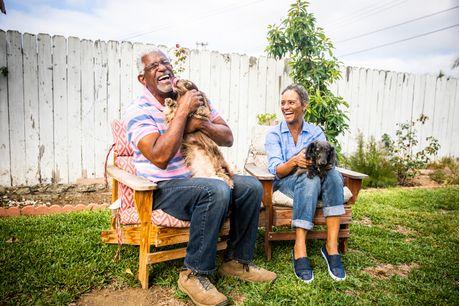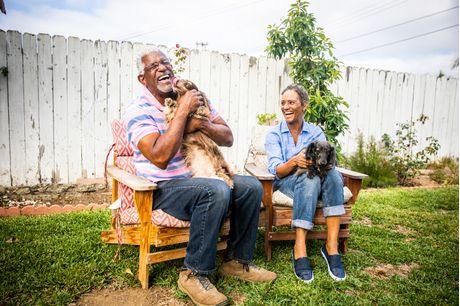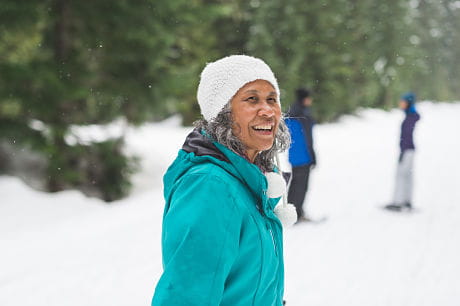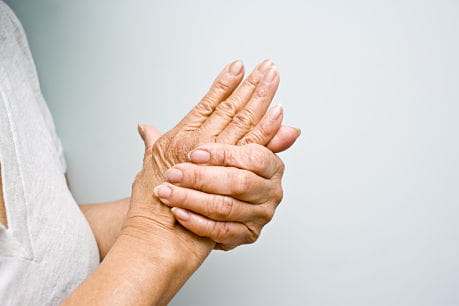Holding it together when you have arthritis
Learn about the different arthritis types and treatment options
Arthritis: The aching in your joints
Arthritis is joint pain, discomfort and difficulty moving. The type of arthritis determines the type of pain you may feel. Surprisingly, arthritis is not one disease, but several — in fact, there are over 100 arthritis types.
Here are some of the most common:
- Osteoarthritis (commonly called OA)
- Rheumatoid arthritis
- Lupus
- Gout
The two main common types of arthritis are osteoarthritis and rheumatoid arthritis. Some forms of arthritis, like OA, happen when the cartilage in your joints starts to wear down. Others, like rheumatoid arthritis, may be caused by an overactive immune system.
Is arthritis more common among women?
If you’re a woman, perhaps you’ve noticed that you and other women you know may seem to have arthritis more than the men in your lives do. Different forms of arthritis affect men and women. While gout is more common among men, OA affects men and women equally, and rheumatoid arthritis is more common among women.
“Osteoarthritis occurs when cartilage breaks down over time. Rheumatoid arthritis is different. It’s an autoimmune disease, meaning it’s caused when your immune system begins to work overtime and attacks healthy parts of your body,” explains Dr. Chad Walker, a rheumatologist at Geisinger Orthopaedics and Sports Medicine – Scranton. “Autoimmune disorders, including rheumatoid arthritis, are more common for women.”
Getting a grip on arthritis: Tips for arthritis relief
Whether you have rheumatoid arthritis or OA, you want to find a way to manage your pain. The good news is that there are many ways to reduce pain and live a better, more fulfilling life. One quick fix is taking over-the-counter medicine to relieve symptoms. Many common pain relievers such as Advil® and Motrin® (ibuprofen) are found at your local drugstore and can relieve arthritic pain. Your doctor might also give you a prescription for your symptoms. But there are also healthy, holistic and preventive approaches that are excellent starting points in managing your pain:
- Maintaining a balanced diet and healthy weight
- Exercising regularly
- Applying warmth and cold to aching joints
- Taking time to rest
Diet
Eating right can help you live a healthier lifestyle and prevent many future health complications. Maintaining a healthy body weight will also be easier and exercising will be smoother.
For those who suffer from arthritis, the Mediterranean diet may be beneficial. This diet is rich in protein, including fish, beans and whole grains. It’s also packed with fruits and vegetables, such as grapefruit, broccoli and beets. These plant-based nutrients contain antioxidants that can reduce inflammation and help if you’re struggling with rheumatoid arthritis.
Exercise
If your joints hurt, try moving them more often with physical activity. Exercise reduces weight on your joints and stretches your muscles. But take care not to hurt your joints by moving more than you can handle.
“You must be careful not to injure your body by moving your joints too much,” Dr. Walker says. “The best way to start handling your arthritic pain is by taking simple, gentle walks. Then you can work up to more difficult exercises. Once you have started walking regularly enough, you might consider doing Pilates, cycling or water exercises. You also want to exercise your hand joints to keep them nimble.”
Hot and cold therapy
You can also apply heat and cold to sore joints before and after exercise. The heat will naturally relax muscles and relieve pain. The cold will dull the pain and reduce swelling. If you have pain after exercising, an ice pack is better than a heating pad. After relieving pressure on your joints through exercise, allow your body to readjust and rest.
Dr. Walker adds, “The best way to deal with rheumatoid arthritis is to eat the right foods, exercise the right way and be aware of activities that might worsen it.”
Changing your lifestyle can help soothe your arthritis symptoms, but it may not bring complete relief. If you have osteoarthritis, your doctor may prescribe more advanced care. Talk with him or her to learn whether non-surgical or surgical options may be right for you. These may include treatments that repair or replace tendons and joints.
Geisinger’s rheumatology team can help you resolve issues with autoimmune disorders and arthritis. If you’re concerned about your arthritis and want to find the best treatment, contact our team for help.
Next steps:
Make an appointment with Chad Walker, DO
Find a rheumatologist near me
Learn about care for arthritis and autoimmune conditions





